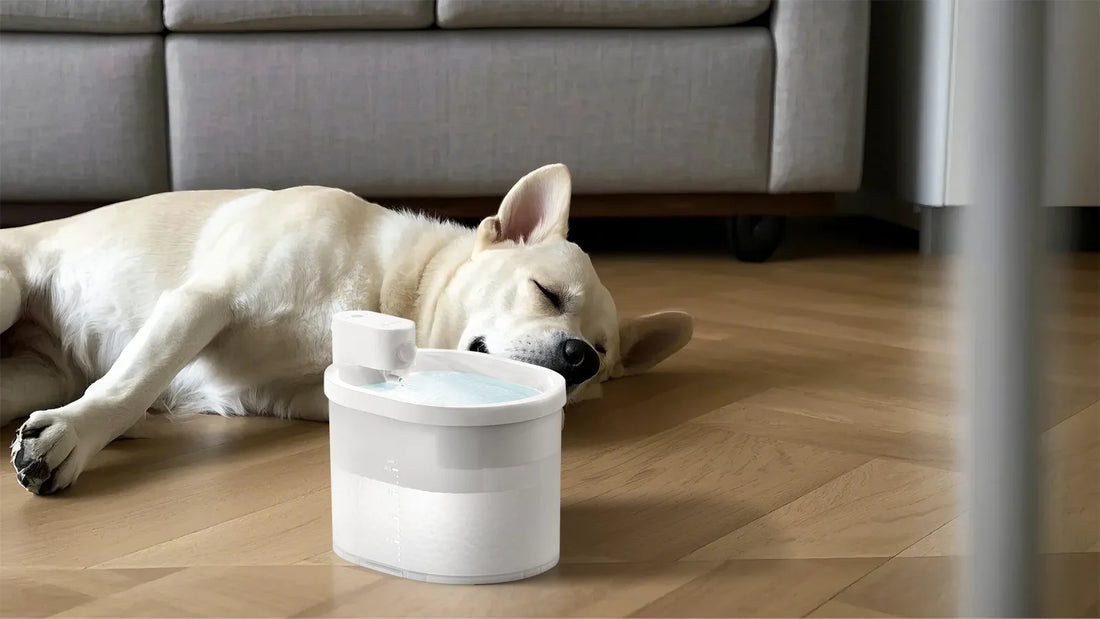If you've ever found yourself asking, 'Why won't my dog eat out of a dog bowl?' you're not alone. Many pet owners face this puzzling issue, and it can be both frustrating and concerning. Understanding the reasons behind this behavior is the first step toward finding a solution that works for both you and your furry friend.
Possible Reasons Your Dog Won't Eat Out of a Dog Bowl
There are several factors that could contribute to your dog's reluctance to eat from a bowl. Let's explore some of the most common ones.
1. The Bowl Material
Dogs can be sensitive to the material of their bowls. Some dogs may dislike the feel of metal or plastic against their noses or whiskers. Ceramic bowls, while often preferred by humans, can also be problematic if they chip or crack, creating sharp edges that can irritate your dog.
2. The Bowl's Size and Shape
The size and shape of the bowl can also play a role. A bowl that's too deep or too narrow may make it difficult for your dog to access their food comfortably. Similarly, a bowl that's too large might make your dog feel overwhelmed.
3. The Bowl's Location
Where you place the bowl can affect your dog's willingness to eat. If the bowl is in a high-traffic area or near loud appliances, your dog might feel too distracted or stressed to eat. On the other hand, placing the bowl in a quiet, secluded spot might encourage your dog to eat more comfortably.
4. The Food Itself
Sometimes, the issue isn't the bowl but the food inside it. If your dog has recently changed diets or if the food has gone stale, they might refuse to eat. Additionally, some dogs are picky eaters and may simply not like the taste or texture of their current food.
5. Health Issues
If your dog suddenly stops eating from their bowl, it could be a sign of an underlying health issue. Dental problems, gastrointestinal issues, or even stress and anxiety can all affect your dog's appetite. If you suspect a health issue, it's important to consult your veterinarian.
Practical Solutions to Encourage Your Dog to Eat from a Bowl
Now that we've explored some of the reasons why your dog might not be eating from their bowl, let's look at some practical solutions to address this behavior.
1. Experiment with Different Bowl Materials
If you suspect that the material of the bowl is the issue, try switching to a different type. Stainless steel, ceramic, and plastic bowls each have their pros and cons, so it might take some trial and error to find the one your dog prefers.
2. Choose the Right Size and Shape
Make sure the bowl is the appropriate size and shape for your dog. A shallow, wide bowl might be more comfortable for dogs with short snouts, while a deeper bowl might work better for larger breeds. Additionally, consider using a bowl with a non-slip base to prevent it from sliding around while your dog eats.
3. Find the Perfect Location
Experiment with different locations for your dog's bowl. A quiet, low-traffic area where your dog feels safe and secure might encourage them to eat. Avoid placing the bowl near loud appliances or in areas where there's a lot of foot traffic.
4. Check the Food
If you suspect that the food is the issue, try switching to a different brand or flavor. Make sure the food is fresh and stored properly to maintain its quality. You can also try adding a small amount of warm water or broth to the food to make it more appealing.
5. Address Health Concerns
If your dog's refusal to eat from their bowl is accompanied by other symptoms, such as lethargy, vomiting, or diarrhea, it's important to consult your veterinarian. They can help determine if there's an underlying health issue that needs to be addressed.
Additional Tips to Encourage Your Dog to Eat
In addition to the solutions mentioned above, there are a few more tips you can try to encourage your dog to eat from their bowl.
1. Establish a Routine
Dogs thrive on routine, so try to feed your dog at the same times each day. This can help create a sense of predictability and security, making your dog more likely to eat.
2. Make Mealtime Fun
Turn mealtime into a fun and engaging experience for your dog. You can use puzzle feeders or interactive toys that dispense food as your dog plays with them. This can make eating more enjoyable and mentally stimulating for your dog.
3. Avoid Overfeeding Treats
If your dog is filling up on treats throughout the day, they might not be hungry when it's time to eat their regular food. Try to limit the number of treats you give your dog and make sure they're not interfering with their appetite.
4. Be Patient
Changing your dog's eating habits can take time, so be patient and consistent with your efforts. If one solution doesn't work, try another until you find what works best for your dog.
Understanding why your dog won't eat out of a dog bowl is the first step toward finding a solution that works for both of you. By considering factors like the bowl's material, size, and location, as well as your dog's health and preferences, you can create a more comfortable and enjoyable eating experience for your furry friend. With a little patience and experimentation, you'll soon have your dog happily eating from their bowl again.

![[🎃Halloween Sale]UAHPET Stainless Steel Self-Cleaning Cat Litter Box](http://www.uahpet.com/cdn/shop/files/1-cat-litter-box.jpg?v=1759128420&width=1600)












